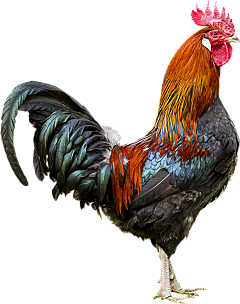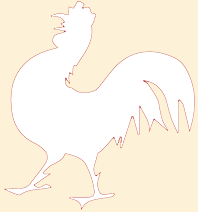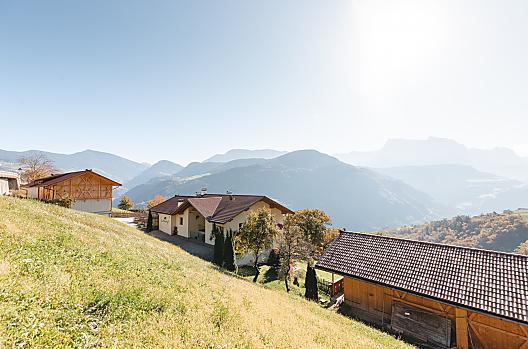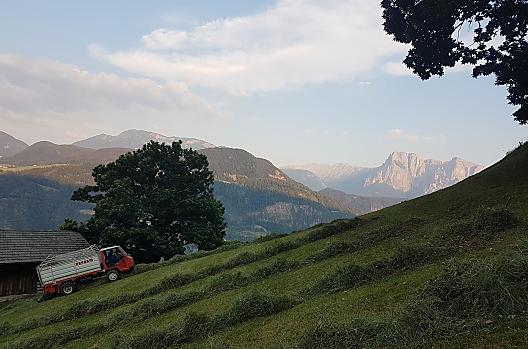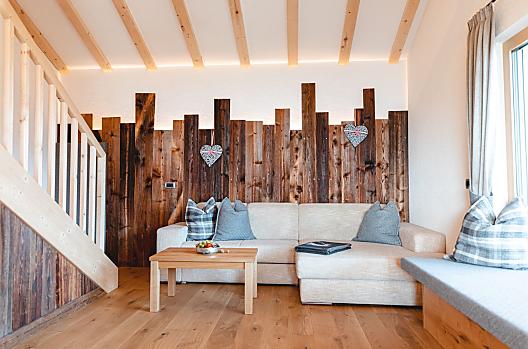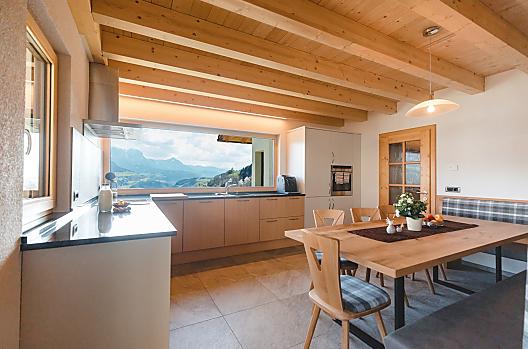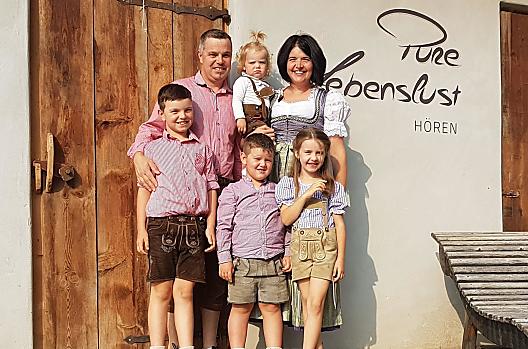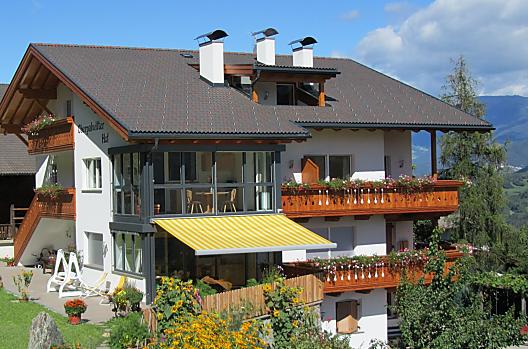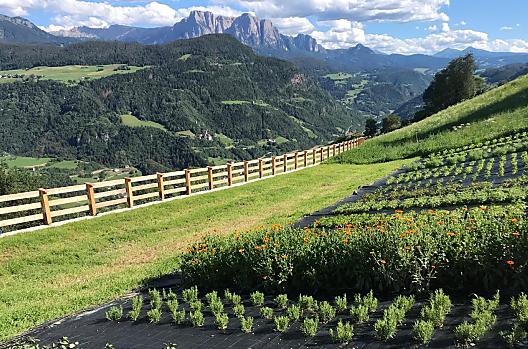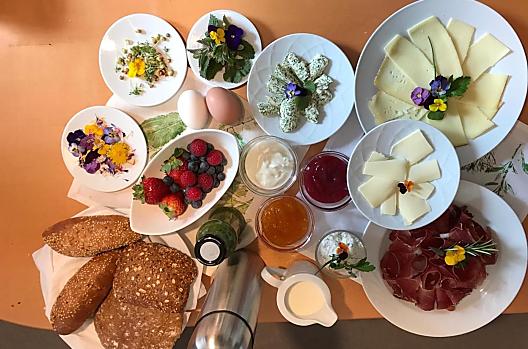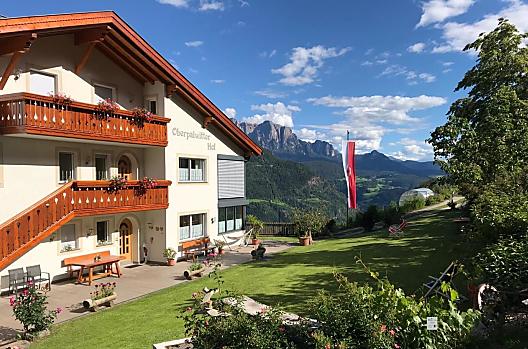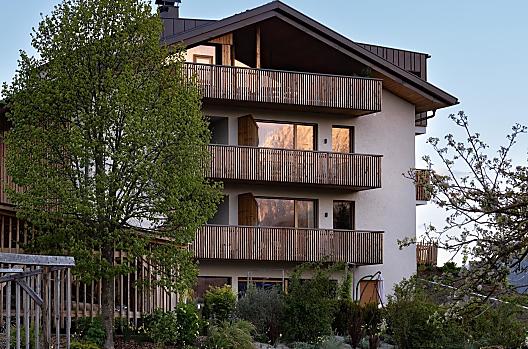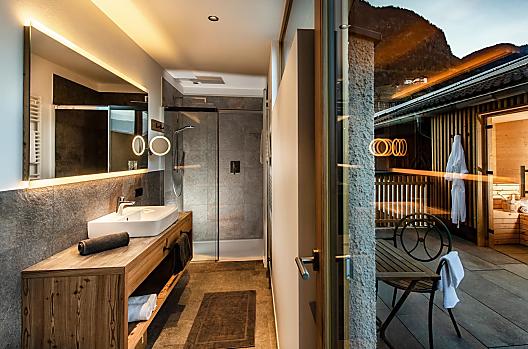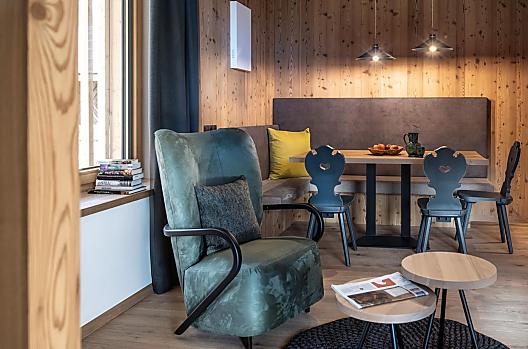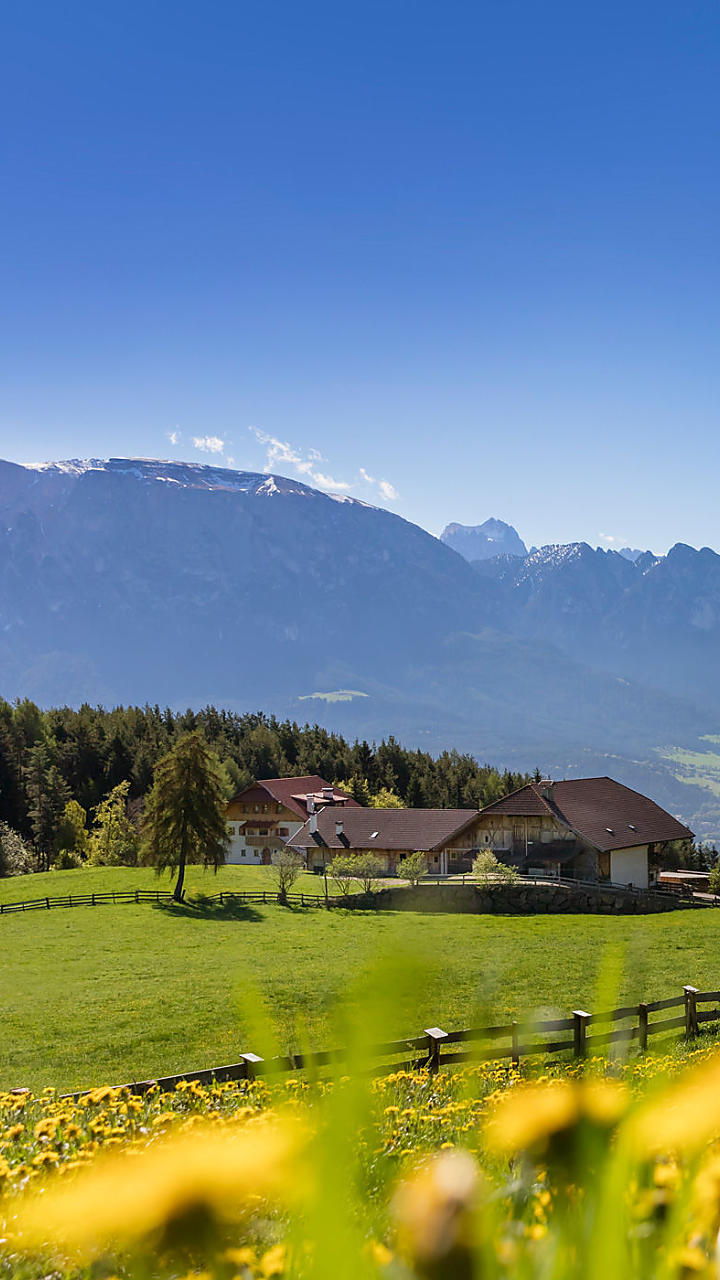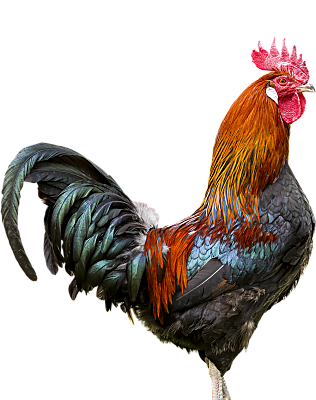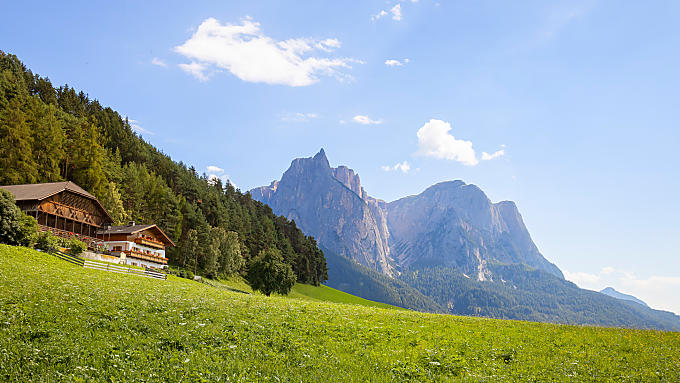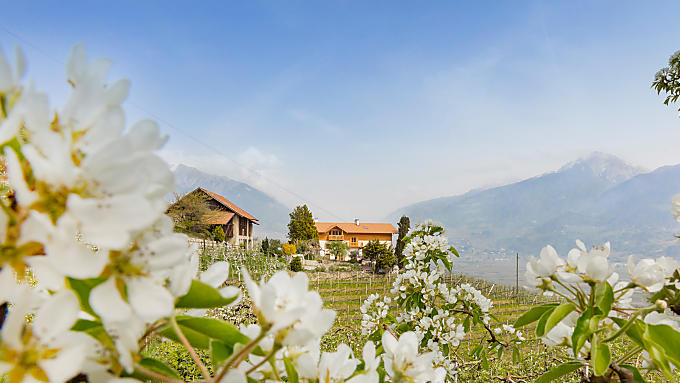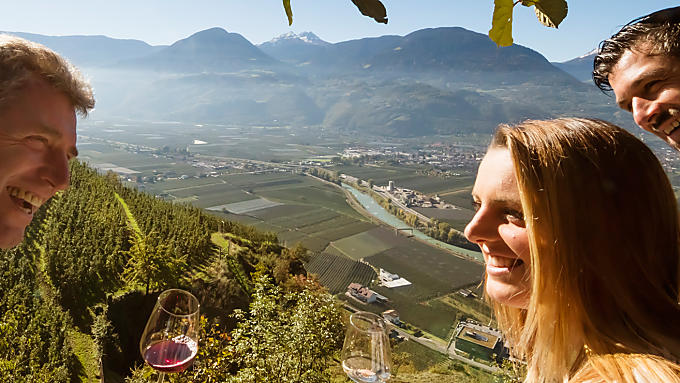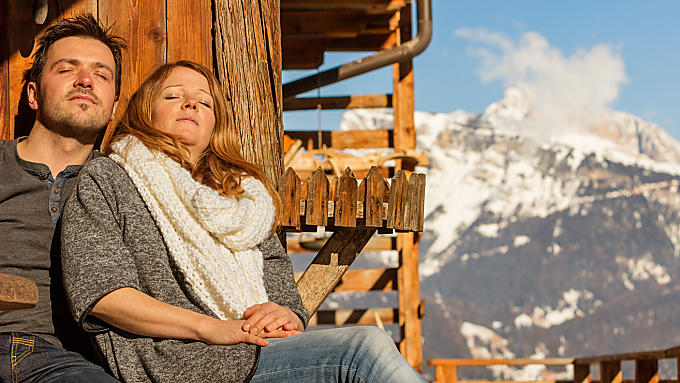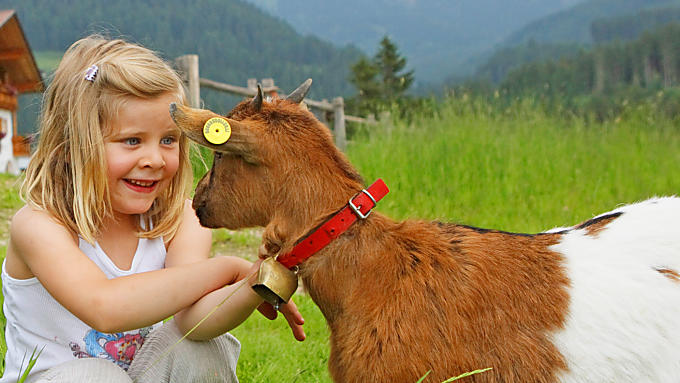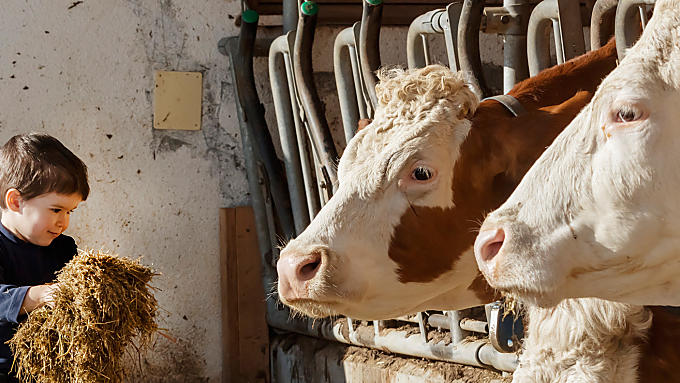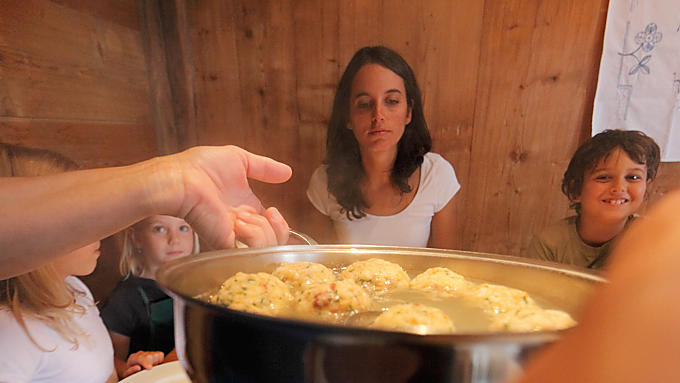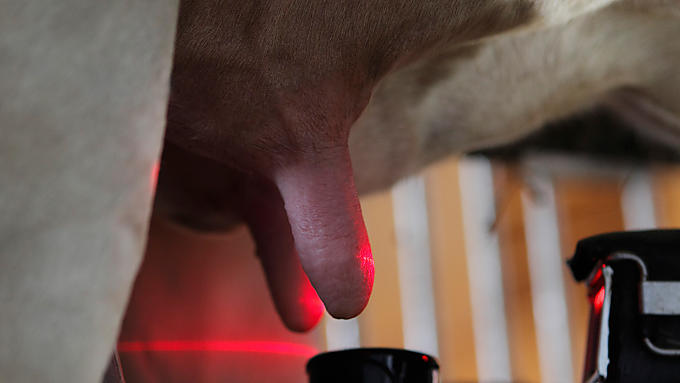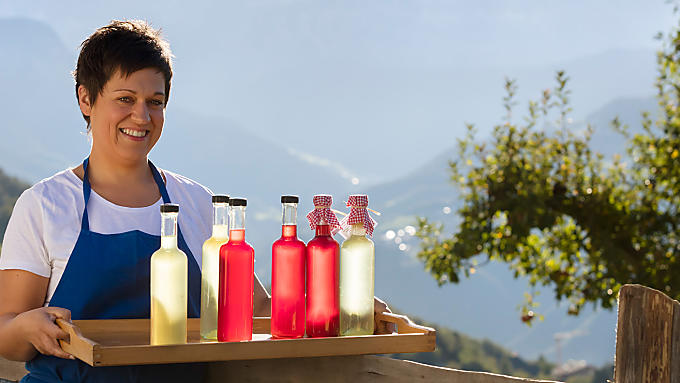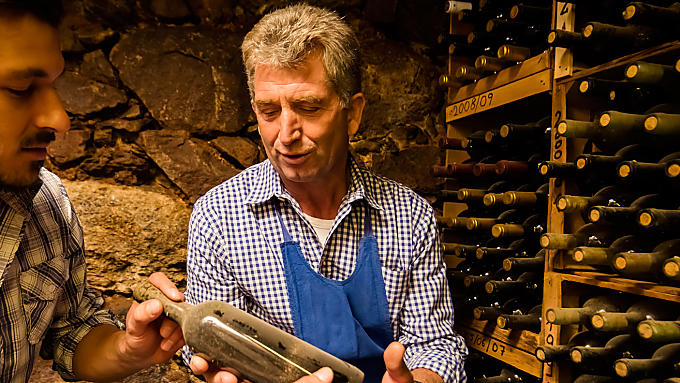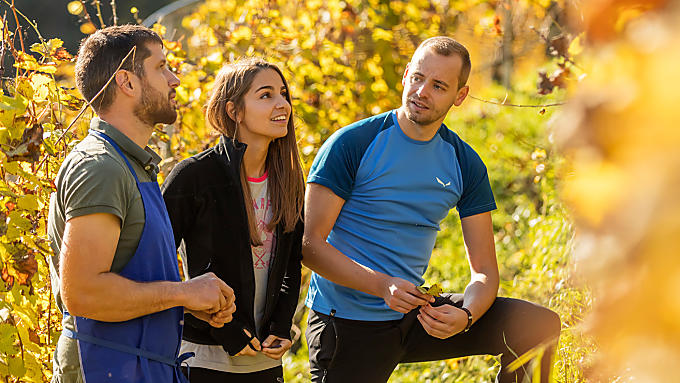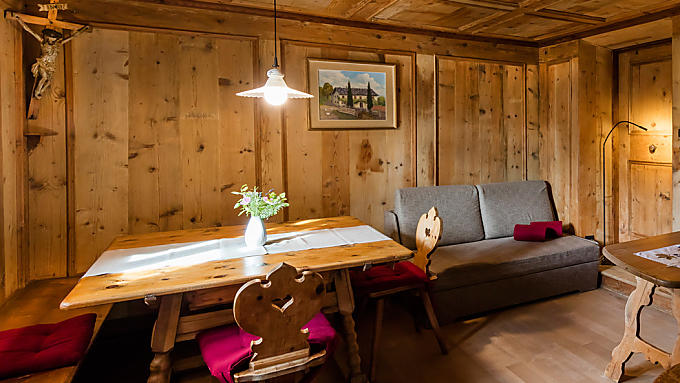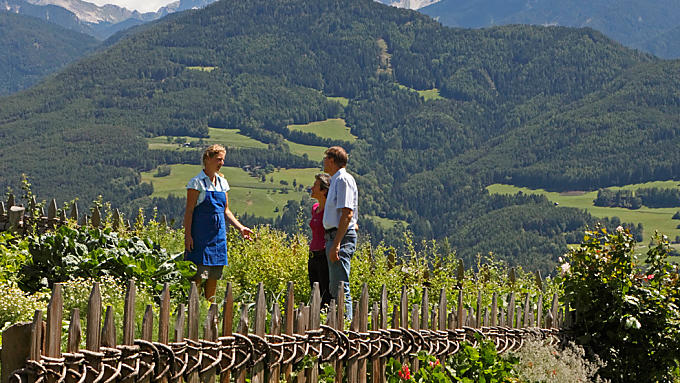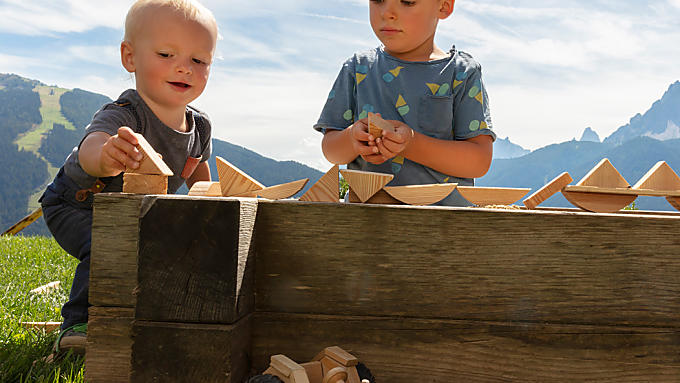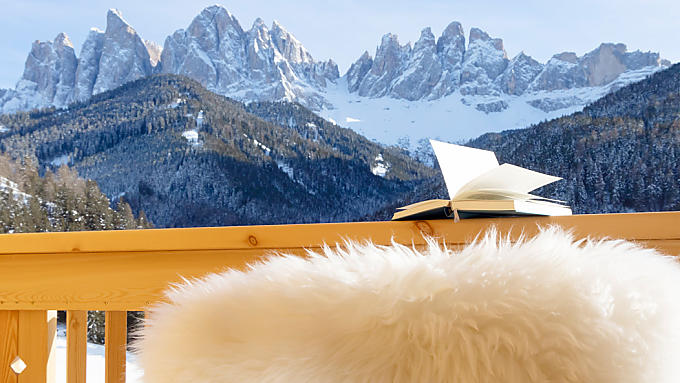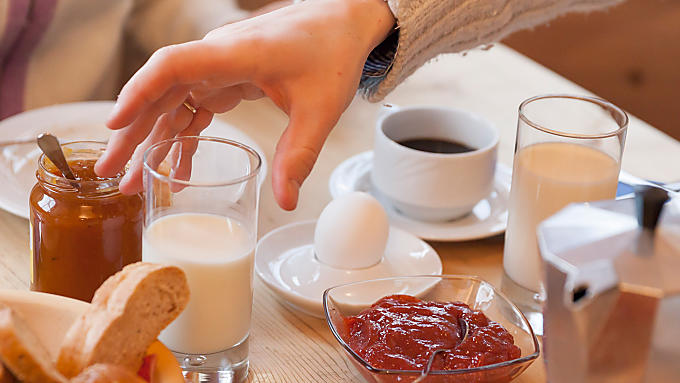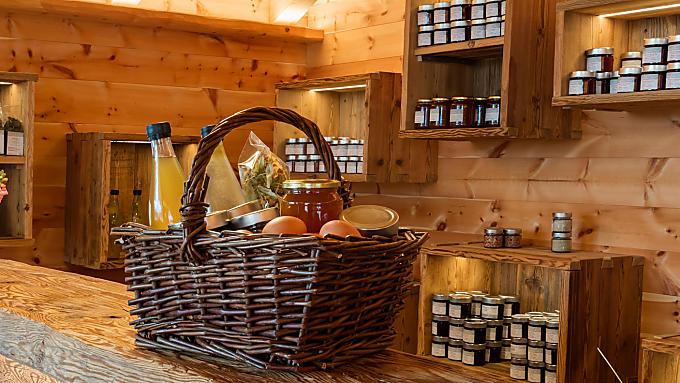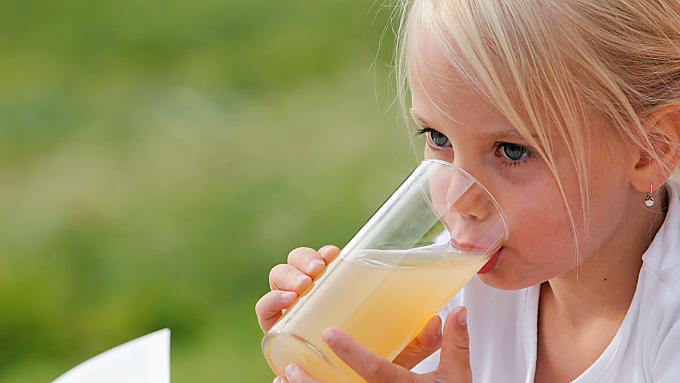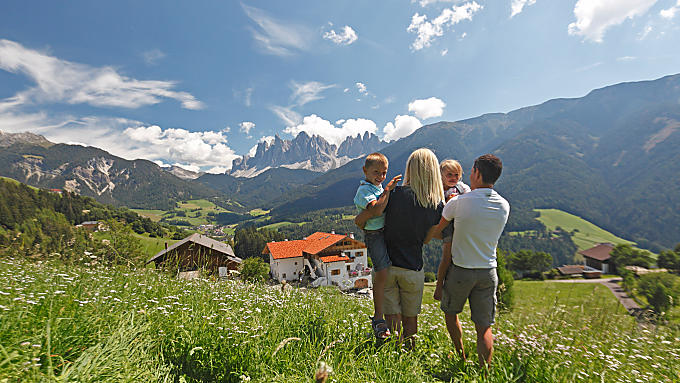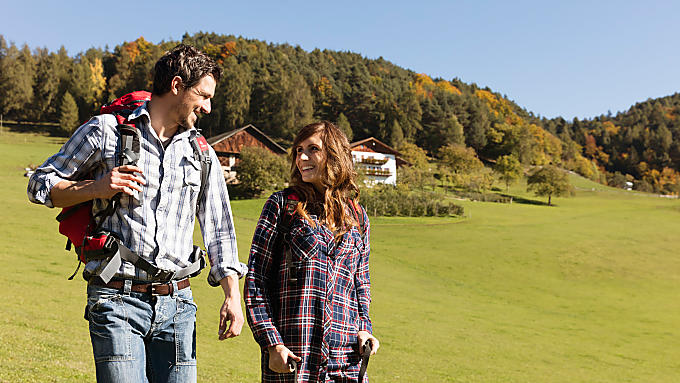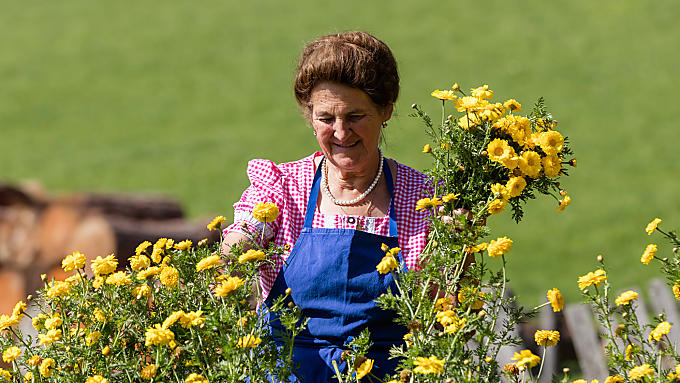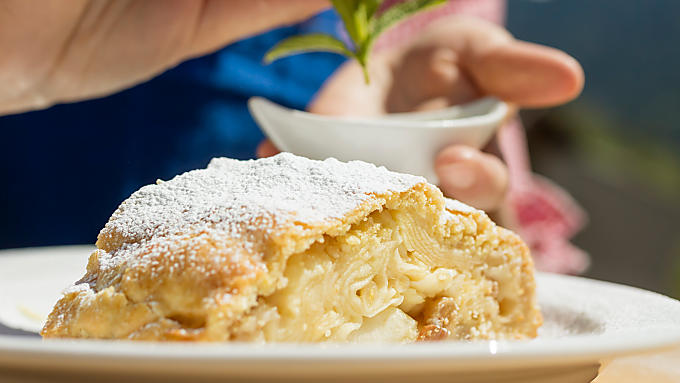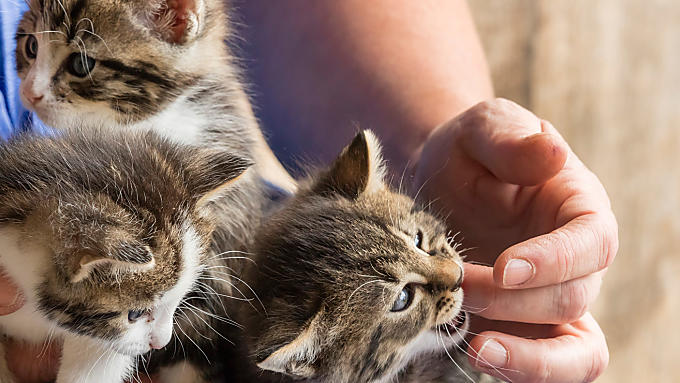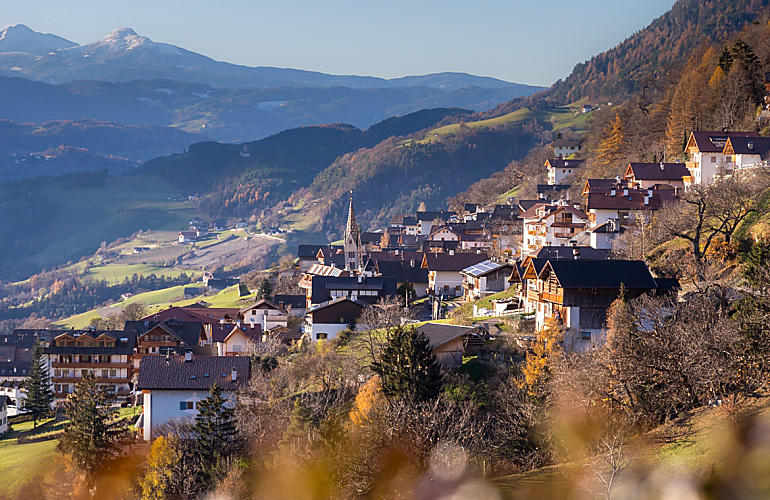
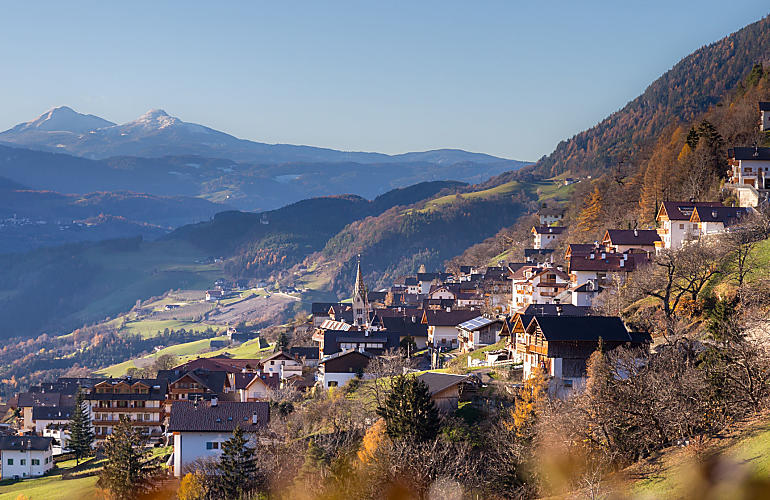
Sweet temptation
Holiday location
Farm Holidays in Barbian
A Farm Holiday in the village famous for its 'Zwetschken', or damsons. Barbian lies on a fertile terrace in low mountains in the south of Eisacktal valley and affords enjoyment for all the senses.
Barbius, a Roman land-owner, gave the place its name. However, archaeological excavations indicate that people were settled in the area that is Barbian today long before the Romans arrived. At present, the 1,700-people-strong municipality comprises an area that stretches from the district of Kollmann down in the valley across the hamlets of Saubach and Dreikirchen and up to the Rittner Horn mountain. Up there, old border walls bear witness to a dispute over ownership of mountain pastures, which broke out between Barbian and Ritten hundreds of years ago.
A Farm Holiday in the village famous for its 'Zwetschken', or damsons. Barbian lies on a fertile terrace in low mountains in the south of Eisacktal valley and affords enjoyment for all the senses.
Barbius, a Roman land-owner, gave the place its name. However, archaeological excavations indicate that people were settled in the area that is Barbian today long before the Romans arrived. At present, the 1,700-people-strong municipality comprises an area that stretches from the district of Kollmann down in the valley across the hamlets of Saubach and Dreikirchen and up to the Rittner Horn mountain. Up there, old border walls bear witness to a dispute over ownership of mountain pastures, which broke out between Barbian and Ritten hundreds of years ago.
The leaning tower
No matter how often you visit the village of Barbian set at an altitude of 836 metres, the leaning tower of the parish church of St. Jacob the Elder will have visitors amazed. At a height of around 37 metres, the tip of the tower leans over 1.57 metres, making this tower with its octagonal pointed helmet more leaning than the famous tower of Pisa. When staying at a holiday flat in Barbian, a visit to the Holy Sepulchre Chapel under the road from Waidbruck to Barbian, to St. Leonhard's and the Trinity Church in the district of Kollman and St. Ingenuin and Albuin's Church in the idyllic hamlet of Saubach are well worth it.
Bad Dreikirchen
Bad Dreikirchen, which is known far beyond Barbian, may only be reached on foot. It was between the 13th and 16th centuries that a nest of three small churches was built in an isolated forest clearing on the site of an ancient pagan sacred spring and dedicated to the saints Gertraud, Nicholas and Magdalena. A look inside these three churches will reveal Gothic winged altars and elaborate frescoes of the late medieval Brixen School.
Bad Dreikirchen has always been a popular place to linger. Illustrious guests such as Sigmund Freud, Christian Morgenstern or Franz von Defregger spent their summer holidays in this Barbian hamlet.
Those interested in archictecture should pay a visit to Hotel Briol above Bad Dreikirchen, which was converted by the artist Hubert Lanzinger in Bauhaus style in 1928. Along with other villas used as summer homes, Briol forms an interesting ensemble also featuring the Mimi House by the famous architect, Lois Welzenbacher.
A particularly pleasant circular walk to Briol and Bad Dreikirchen starts at Barbian waterfalls, which plunge down over 200 metres in a series of eight stages. The last waterfall is actually the highest, at 85 metres.
In search of past times
Holidays in Barbian mean meeting history up close. Barbian has been a transit point since since time immemorial, which is shown in the historical roads, the remains of the Imperial Road in the hamlet of Saubach and the Kuntersweg path in Kollmann, which was laid in 1314 and may still be walked today. Trostburg fortress in Waidbruck is firmly in view from Barbian. This impressive castle was built in the 12th century and the late medieval poet and singer, Oswald von Wolkenstein, spent some of his youth there.
The leaning tower
No matter how often you visit the village of Barbian set at an altitude of 836 metres, the leaning tower of the parish church of St. Jacob the Elder will have visitors amazed. At a height of around 37 metres, the tip of the tower leans over 1.57 metres, making this tower with its octagonal pointed helmet more leaning than the famous tower of Pisa. When staying at a holiday flat in Barbian, a visit to the Holy Sepulchre Chapel under the road from Waidbruck to Barbian, to St. Leonhard's and the Trinity Church in the district of Kollman and St. Ingenuin and Albuin's Church in the idyllic hamlet of Saubach are well worth it.
Bad Dreikirchen
Bad Dreikirchen, which is known far beyond Barbian, may only be reached on foot. It was between the 13th and 16th centuries that a nest of three small churches was built in an isolated forest clearing on the site of an ancient pagan sacred spring and dedicated to the saints Gertraud, Nicholas and Magdalena. A look inside these three churches will reveal Gothic winged altars and elaborate frescoes of the late medieval Brixen School.
Bad Dreikirchen has always been a popular place to linger. Illustrious guests such as Sigmund Freud, Christian Morgenstern or Franz von Defregger spent their summer holidays in this Barbian hamlet.
Those interested in archictecture should pay a visit to Hotel Briol above Bad Dreikirchen, which was converted by the artist Hubert Lanzinger in Bauhaus style in 1928. Along with other villas used as summer homes, Briol forms an interesting ensemble also featuring the Mimi House by the famous architect, Lois Welzenbacher.
A particularly pleasant circular walk to Briol and Bad Dreikirchen starts at Barbian waterfalls, which plunge down over 200 metres in a series of eight stages. The last waterfall is actually the highest, at 85 metres.
In search of past times
Holidays in Barbian mean meeting history up close. Barbian has been a transit point since since time immemorial, which is shown in the historical roads, the remains of the Imperial Road in the hamlet of Saubach and the Kuntersweg path in Kollmann, which was laid in 1314 and may still be walked today. Trostburg fortress in Waidbruck is firmly in view from Barbian. This impressive castle was built in the 12th century and the late medieval poet and singer, Oswald von Wolkenstein, spent some of his youth there.
Farm search
Holiday farms in Barbian
3 reasons
A holiday in Barbian
The leaning church tower
of Barbian
Circular walk with views
to the waterfalls
Dreikirchen:
3 adjoining chapels
Tasty treats from Barbian: enjoying and walking
There's no shortage of culinary treats on a holiday on a farm in Barbian. The damson, cultivated since the Middle Ages by native farmers on the slopes of Barbian, is still an important ingredient in farm cooking and is a favourite ingredient in desserts.
There's no shortage of culinary treats on a holiday on a farm in Barbian. The damson, cultivated since the Middle Ages by native farmers on the slopes of Barbian, is still an important ingredient in farm cooking and is a favourite ingredient in desserts.
Every year in September, the people of Barbian make this purple stone fruit the focus of a series of culinary events. During 'Zwetschkenwochen' in Barbian, the fruit may be tasted in a range of variation, from jam and damson bread to damson dumplings and strudel and more substantial dishes. After eating, it's worth taking a stroll through the damson trees on the damson-themed path leading past lots of information boards to form an interesting educational trail.
During the autumn months, all eyes turn to sweet chestnuts in Barbian. This tasty fruit is the crowning glory to a typical 'Törggelen' meal in atmospheric cellars, whether roasted or as a filling in fried pastries known as 'Bauernkrapfen'. The third stretch of the Eisacktal 'Keschtnweg', or Chestnut Trail, may be done from Barbian, which goes through well-tended cultural landscape, little hamlets and colourful mixed forest to reach Leitach on the Ritten high plateau in around five hours' walk.

